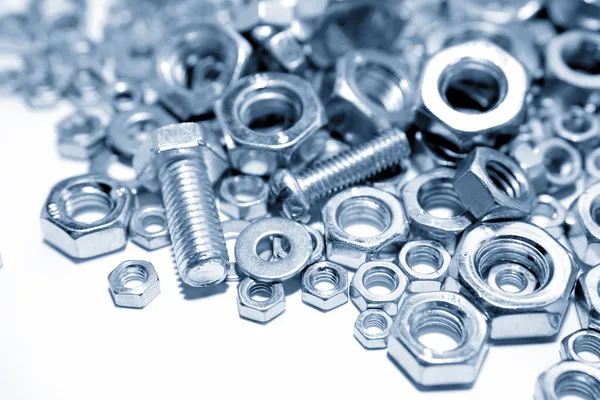From Carpentry Shops to Craft Spaces: The Flexibility of Nuts and Fittings

Bolts and nuts are often seen as the unsung heroes of building and maintenance, quietly holding everything together behind the curtain. From the structure of a sturdy building to the intricate mechanisms of your favorite automotive marvel, these fasteners play a vital role in countless uses. Despite their simplicity, the world of bolts and bolts is full with variety, each type designed for specific uses and settings. Knowing the various types available, their unique functions, and when to apply them can enable you to tackle a broad spectrum of projects with confidence.
In this comprehensive guide, we will delve into the intriguing realm of bolts and bolts, exploring everything from the most common types of bolts to the specialized hardware that can make or break a project. Whether you are embarking on a DIY home improvement project, working on industrial construction, or conducting car repairs, understanding how to select the right fastener can significantly impact the strength and reliability of your project. By the end of this article, you will be equipped with the understanding to choose the most suitable nut and bolt for any job at hand.
Comprehending Bolts and Nuts
Nuts and bolts are crucial fasteners used in numerous settings, providing security and stability in everything from building projects and car repairs. A bolt are a screwed fastener with a head usually secured with a wrench, whereas a nut can be a hexagonal piece which connects to the bolt’s threads to hold materials firmly. Together, they establish a strong mechanical bond that can withstand heavy loads, making them integral to both professional and DIY projects.
The flexibility of bolts and nuts derives from the variety that exists, each crafted for specific applications. For instance, standard machine bolts work well in general use, lag bolts are perfect for intensive building, and carriage bolts are often employed in woodworking. Understanding the function of these fasteners aids in choosing the appropriate fastener for your project, ensuring the durability and integrity and longevity in your crafting or repair tasks.
Thread types are another crucial aspect of bolts and nuts, affecting their functionality. Coarse threads give increased hold on softer materials, while fine threads give better fastening in limited spaces. Understanding these differences, combined with the contrast of metric and imperial measurements, is essential when selecting fasteners. With projects differing between detailed car repairs and strong construction, understanding the fundamentals of nuts and bolts enables improved choices and effective results. spintax ### Types and Applications
Fasteners come in a range of shapes, dimensions, and materials, each crafted for particular uses. For example, hex bolts are common in standard construction due to their strength and flexibility. These multi-purpose fasteners are compatible with conventional tools, making installations and removals straightforward. Carriage bolts, on the other hand, are ideal for timber structures, featuring a curved top that prevents tearing wood, making them perfect for external furniture or deck builds.
In the field of heavy-duty construction, selecting the right bolts is essential. Lag bolts, known for their sturdy grip in wood, are often used in fastening beams or large furniture. Meanwhile, steel bolts, used in metal constructions, offer superior tensile strength and are essential in structures. Understanding which kind of bolt is appropriate for your task can vastly improve both durability and security.

When it comes to fastener nuts, the options are equally diverse. Locking nuts are designed to prevent unthreading under movement, making them ideal for vehicle applications where movement is constant. Flanged nuts provide a wide bearing surface to spread the load more evenly, ideal for brittle materials. Determining which kind of nut to pair with your chosen bolt is essential for obtaining the desired level of security and efficiency in any assembly.
Materials and Standards
The substances used in nuts and screws play a vital role in determining their durability, endurance, and suitability for multiple applications. Steel is the most common material, valued for its elevated tensile strength and flexibility. Within the realm of metal, there are different grades, such as inox, which offers excellent corrosion resistance, and low-carbon steel, known for its affordability and strength. For specific uses, substances like copper alloy and titan are also available, each offering unique properties such as lightweight construction or increased resistance to corrosion and wear.
Grasping parameters is essential for selecting the appropriate fastener. Bolt grades indicate the robustness and quality of the connector, with a elevated grade typically signifying better performance. For example, a grade 8 bolt is more robust than a class 5 bolt and is often recommended for heavy-duty applications. Similarly, the specifications of nuts should align with the grade of bolts to ensure a secure fit. Thread types—粗, 精, and 公制—must also correspond between nuts and screws to ensure proper engagement, which can significantly affect the integrity of the assembly.
Finishes can further enhance the performance of nuts and bolts. Zinc-coated fasteners are common and provide fundamental corrosion resistance, while galvanic options offer enhanced protection for external use. Specialized finishes, such as those found on protective fasteners, provide tamper resistance, while nylon lock nuts utilize a distinct design to prevent loosening under vibration. When choosing fasteners, consider the material and standard to ensure maximum performance for your specific project requirements.
